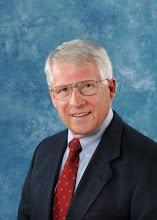The following is offered by Dr. John Plodinec, Associate Director for Community Resilience Certification at CARRI and Science Advisor, Savannah River National Laboratory.
Generally, communities in early America were formed based on the perceived self-interest of their members – at convenient points for land or water transportation, or near valuable natural resources, or for mutual defense or for religious reasons. These early communities quickly became hubs of activity for the common good – for defense against hostile intruders, for trade, for education.
In the earliest days, most communities were self-sufficient – the community provided its citizens with the essentials from local farmers, artisans and craftsmen. The community had to be relatively self-sufficient; most communities were rather isolated (for example, it would take two hours to go from Harlem to central Manhattan, even by ferry) and travel farther than a few tens of miles was both difficult and expensive. These early communities were also relatively stable; their reasons for being - whether economic, defensive or religious – changed very slowly. For most communities, this meant that in times of crisis, people almost instinctively knew who they could rely on for support in times of crisis. Timely assistance could only come from their friends and neighbors - people they had known their entire lives - to recover.
With the growth of cities like Philadelphia, Charleston, Boston and New York, the nature of communities began to become more complex. Instead of looking to the entire community in a crisis, people relied on their neighborhood for support. The neighborhood was largely a place where you lived, and citizens had to look to other neighborhoods – and eventually other communities - for some of their needs. Thus, while early American communities were self-sufficient, cities – and especially neighborhoods – became less so.
At the same time, communities became more dynamic. The waves of immigrants from Europe, then Asia, and then from within the US (particularly the Great Migration of African Americans from the South after Reconstruction ended) resulted in huge changes in the ethnic makeup of even single neighborhoods – for example, Harlem, in New York, was successively primarily Dutch (the Roosevelts lived there), Irish, Jewish, Italian, and African American within the span of 100 years. Thus, individual citizens were less likely to know all of their neighbors, and certainly not for all of their lives. In times of crisis, people more and more turned for support either to other types of “communities” – for example, their church – or to some organized and recognized assistance agency, either public or private.
Further, the changing needs of individual citizens within communities led to the growth of a patchwork quilt of infrastructures intended to fill those needs. These infrastructures might be in private hands (e.g., a private electric company), owned and serviced by the public (the road system), or a combination of public and private (private physicians, public and private hospitals, augmented with other services supplied by non-governmental organizations).
If we fast forward to the first decade of the 21st century, we find that these trends have resulted in communities enmeshed in a web of interdependencies. Within the community, the various infrastructures depend on each other, and can interact in complex ways. Virtually no communities are self-sufficient – they rely on others in their region or state, and sometimes foreign countries to provide some of the essentials of existence.
And there is no one model that describes every community. While communities all perform the same functions, they are distinguished by how – and how well – they perform them. Their organizational infrastructure – the mix of public and private organizations that actually carry out a particular community function - can assume a myriad of forms, each with its own advantages and disadvantages. Thus, in times of crisis, a community needs a roadmap telling it how it is connected both within and externally, so that it can identify where resources may be available, and how best to use them.
A community resilience framework can help communities develop that roadmap. A useful framework will provide a community with a means to look at itself and understand how it functions, including how it is interconnected with other communities. It will also enable a community to better anticipate the direct and indirect impacts of a disaster. As a result, the community will be able to identify the resources likely to be available after a disaster, and how to use them with maximum effect.
Subscribe to:
Post Comments (Atom)

No comments:
Post a Comment